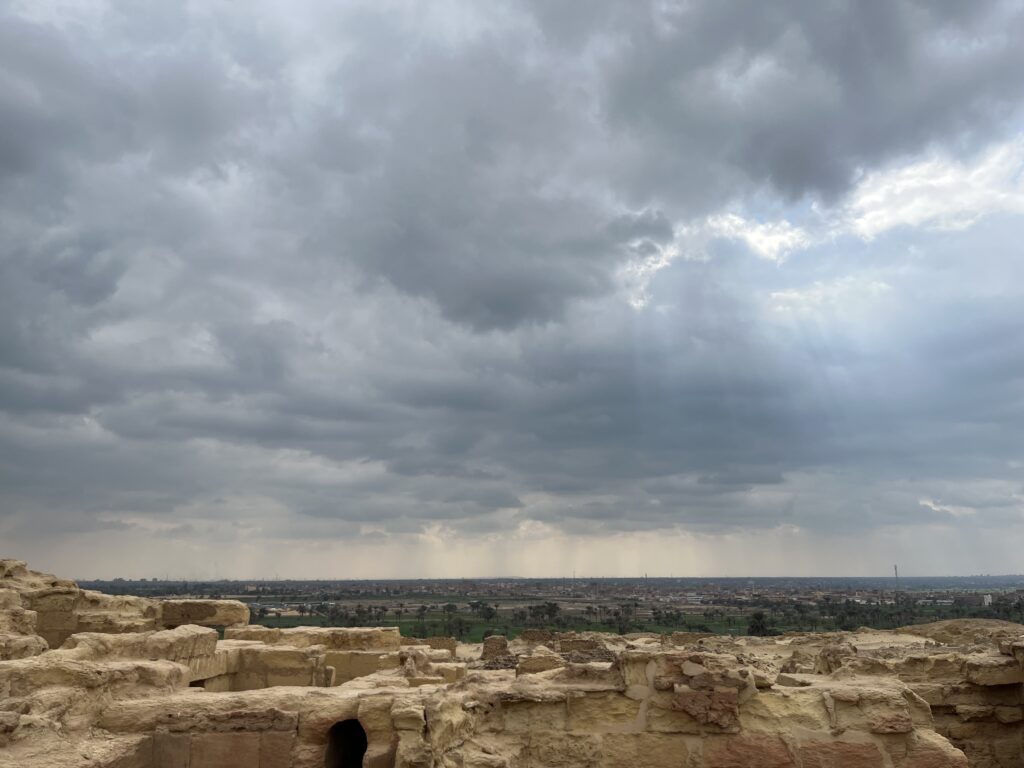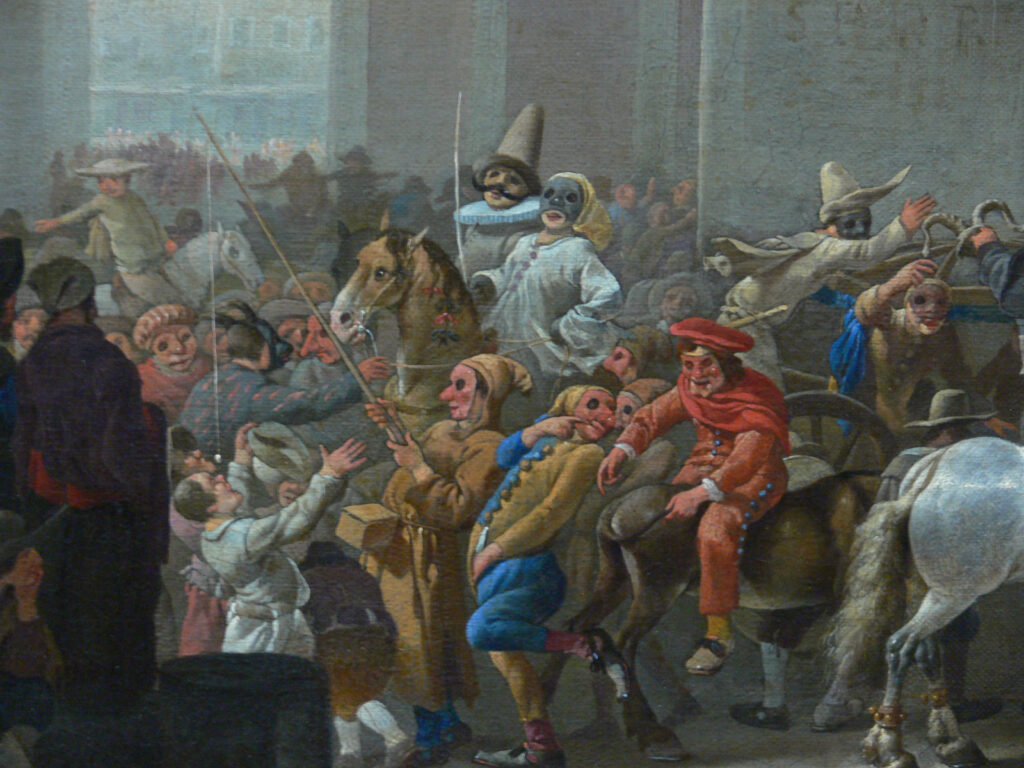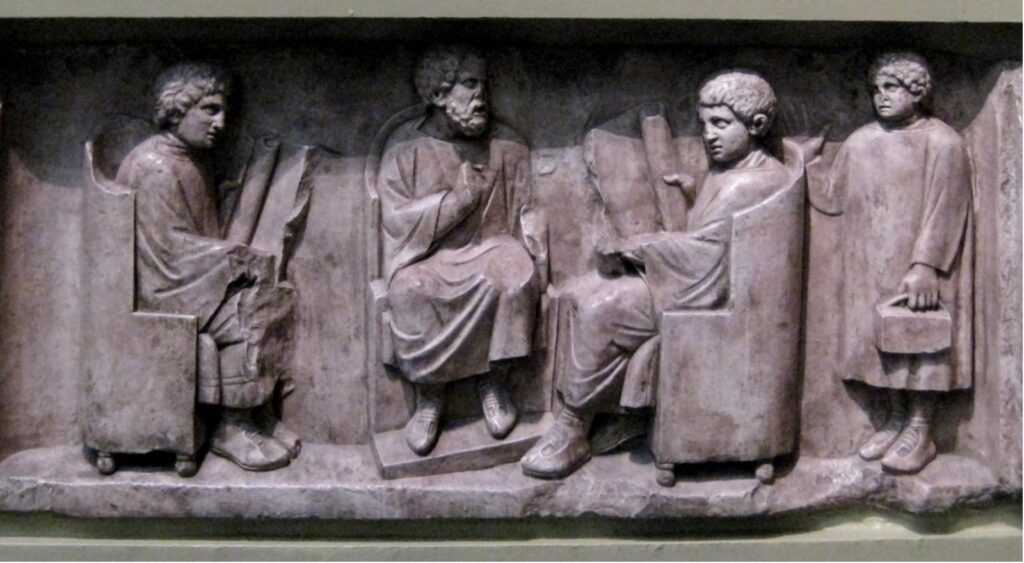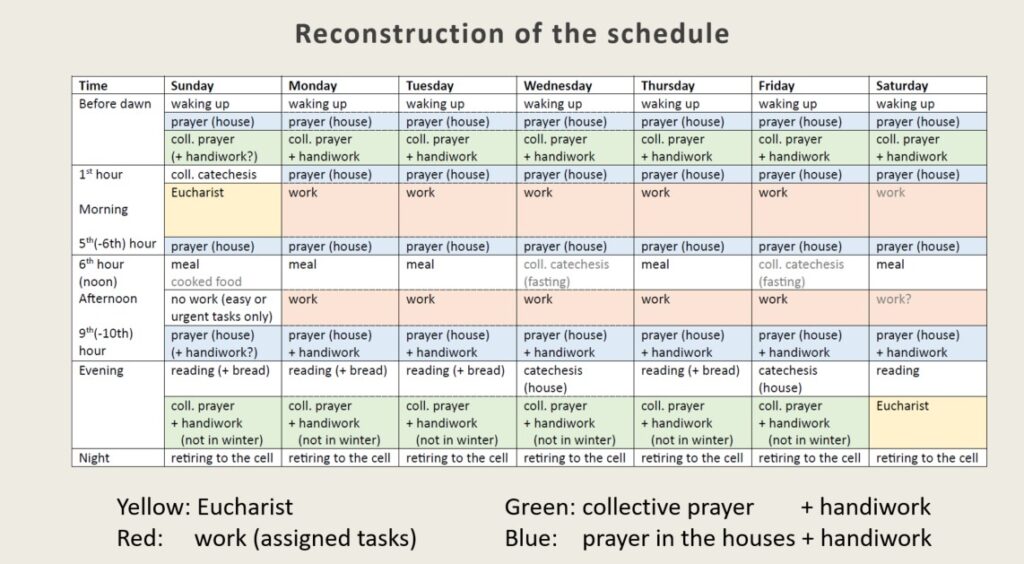The celebration of Easter and Pope Francis’ final blessing Urbi et Orbi, which included a plenary indulgence for all who listened in St Peter’s square or via technical means, reminds me of the two annual meetings for which Pachomian monks assembled in Pbow (Faw al-Qibli; see the map). During the first meeting, they convened for the celebration of Easter. This blog focusses on the second meeting, which developed from a council during which monastic leaders discussed administrative matters to a collective event for all monks, which also celebrated the forgiveness of sin.
Although Pahom (d. 346), better known by the latinized name Pachomius, started his monastic life as a hermit, he established a cenobitic community organized by regulations that promoted common work, common meals, and common prayers. The monastery at Tabennese attracted so many followers that Pahom founded new ones – a total of six for men and two for women – and incorporated three existing ones in a monastic federation called the Pachomian koinonia (‘community’) in about twenty-five years (ca. 320-346). This federation initially extended over a distance of ca. 300 km, from Panopolis (Akhmim) in the north to Latopolis (Esna) in the south, and each monastery was headed by a superior. The superior of the main monastery at Pbow, was also the leader of the entire koinonia. After Pachomius’ death, the number of communities varied: some of them became independent in 351/2, when their abbots rejected the authority of Horsiesios, the second supreme leader, whereas his successor Theodoros founded two new monasteries near Hermopolis Magna (350s-360s). In 391, Archbishop Theophilos of Alexandria invited Pachomian monks to Canopus, east of Alexandria, to establish another community, which was called the Monastery of Metanoia (‘Repentance’). The Greek version that Jerome used in 404 for his Latin translation of the so-called Rule of Pachomius (in fact, four sets of Precepts that may include rules added by later superiors) probably came from this community.
Given the considerable size of the Pachomian federation, a general assembly of monks constituted a veritable mass event. On average, the monasteries counted 200-300 monks or 400 nuns, and 600 monks are recorded for Pbow. In 351, about 2000 monks from the entire koinonia assembled at Pbow for the celebration of Easter (Letter of Ammon). The monks who could not attend and probably the nuns are not included in this number. The (now demolished) basilica at Pbow, consecrated in the second half of the fifth century and measuring 75 × 37.5 m, was indeed large enough to accommodate at least 2000 persons.
The second annual meaning was not based on a central Christian holiday, but started as a practical meeting. After appointing a business director for the entire federation, the great steward at Pbow, Pahom introduced the custom of an annual meeting in Mesore, the last month of the Egyptian calendar. By Mesore 20 (August 13 according to the Julian calendar) the superiors of the monasteries convened to render account to the great steward of the products made by the monks that year and in turn, he arranged the supplies that they needed or appointed housemasters or other officers (Life, Bo. 71, G1 83). Housemasters prepared this great reckoning by counting the number of plaited ropes per week and recording the amount on a tablet (Rule: Precept 27). Various sources record how this second annual meeting at Pbow grew in importance: the Bohairic Coptic and Greek versions of the Life of Pachomius and his disciples, (Bo., G1), the Latin version of the Rule (in a section that is not preserved in Sahidic Coptic), and writings attributed to Pahom (Letter 7; TM 62348, in Greek and Latin) and Theodoros (Letter 2; TM 108130, in Sahidic) in the Latin versions. In her PhD dissertation Pre-Theodosian Ascetic Piety in Fourth-Century Egypt (pp. 112-114), Bernadette McNary describes how the nature, scope and date of this meeting changed in the course of time.
Under Horsiesios’ leadership, ‘the time of the great remission’ was still an administrative event aimed at informing the great steward about the work and expenditure of the monks as well as their bodily needs. It was also one of the two occasions – the other one being the Easter meeting – when Horsiesios appointed superiors, their assistants, and housemasters (Life, G1 122). Interestingly, Theodoros held two meetings in Mesore: an administrative one, when he appointed many superiors and senior monks to other functions or other communities (a policy to stimulate their obedience and flexibility), and an event for all the brethren that lasted multiple days. During these ‘days of remission’, the records of their manual work were read (Life, Bo. 144).
The letters attributed to Pahom and Theodoros confirm a change in the number of people involved: originally, the meeting was meant for superiors and housemasters (Letter 7, Latin title), but later, all brothers and catechumens (candidates for baptism) were invited (Letter 2.3). McNary (p. 114) noted that the announced date changed from Mesore 20 to Mesore 1. Perhaps, the author meant that the monks ‘should have finished all (financial) things, either the buying or the selling’ by Mesore 1 and then travel to Pbow, which took some time. Nevertheless, it was easier for those in the north to sail south for this meeting than for the Easter celebration, as the second meeting took place during the flood, which coincided with strong northern winds (Ariel López, ‘Life on Schedule’, 199-203).
By then, the administrative remission of debt had become linked to the spiritual forgiveness of sin. Both letters underline that the meeting in Mesore was linked to a tradition of mutual forgiveness: all monks were exhorted to ‘share their judgements with’ and pardon each other, so that their souls would be ‘cleansed in sanctification and the fear of God’ (Letter 2.1). They were reminded of Jesus’ words: ‘For if you forgive men their sins, your heavenly Father will forgive you yours’ (Mt 6:14; Letter 2.3). When practiced with sincerity and humility, such a custom can create good will and solidarity.
When translating the Rule (Precept 27), Jerome was struck by this custom, which he compared to the Jubilee of the Old Testament (Preface 8). According to Jewish tradition, Jews were to cancel debts at the end of seven years and refrain from requiring payment from their fellows, ‘because the Lord’s time for canceling debts has been proclaimed’ (Deut. 15:1-2; McNary, p. 117). Every fifty year (7 × 7 + 1) was a Jubilee year, when the land was not worked and people had to return to their property and clan (Leviticus 25:10-17), a custom that is currently not observed on account of the Jewish diaspora.
The theme of forgiveness in the Pachomian tradition further reminds me of another Christian custom that still exists today: since 1300, the Pope of Rome proclaimed a Jubilee or Holy Year every fifty or twenty-five years (depending on need), as ‘a special year of remissions of sins, debts, and universal pardon’. During this period, the faithful are encouraged to make confession, partake of Communion, pray for the Pope, completely renounce all attachment to sin, and make a pilgrimage to Rome, where they can pass through Holy Doors in the four great basilica’s (but recently, Pope Francis designated local basilica’s and sanctuaries worldwide as locations for ‘Doors of Mercy’ as well). In fact, the Roman Catholic Church is celebrating a Jubilee Year this year (December 24, 2024 – January 6, 2026).
Renate Dekker
Bibliography
López, Ariel 2016. ‘Life on Schedule: Monks and the Agricultural Cycle in Late Antique Egypt’, in Jamie Kreiner and Helmut Reimitz (eds), Motions of Late Antiquity: Essays on Religion, Politics, and Society in Honour of Peter Brown (CELAMA 20), Turnhout, 187-208.
McNary, Bernadette 1997. Pre-Theodosian Ascetic Piety in Fourth-Century Egypt: A Study of the Ascetical Letters of Bishops and Monks, PhD diss., University of Toronto (I did not have access to the commercial version: Bernadette McNary-Zak 2000. Letters and Asceticism in Fourth-Century Egypt, Lanham, MD).
Veilleux, Armand 1980. The Life of Saint Pachomius and his Disciple (Pachomian koinonia 1), Kalamazoo, MI.
Veilleux, Armand 1981. Pachomian Chronicles and Rules (Pachomian koinonia 2), Kalamazoo, MI.
Veilleux, Armand 1982. Instructions, Letters, and Other Writings of Saint Pachomius and his Disciples (Pachomian koinonia 3), Kalamazoo, MI.













